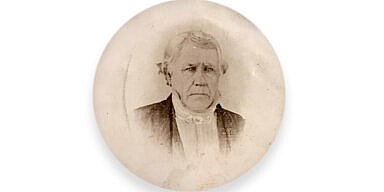One Bosnian says to another: “Have you read The Bridge on the Drina? Read it, I walked on it!”
The former Yugoslavia is blessed with rivers, any number of which mightily fortify the Danube as it courses through the beating heart of Serbia. One particular river, the Drina, which drains into the Sava which drains into the Danube, leaves a singular impression.
First of all, it is beautiful, along much of its course majestic, verdant mountains ring the course, often as not on both sides. The trout is a singular experience, particularly when plucked just minutes from the water, and washed down with a local white (no brands please… Serbian wine brands are an uneven experience, but local homemade stuff is often a delight). Finally, the river is emotional; you cannot fail to perceive that major upheavals in human history took place here, and that history‘s circular nature remains.
On the Eastern bank of the Drina, a Serbian kingdom, by fits and starts, broke away from the Ottoman Empire, consolidated itself, fortified by its rich forests, fertile lands, and a mountain/riverine frontier. Driving the mountains’ serpentine roads from Valjevo to the Drina, one’s mind easily drifts to Partisans, Chetniks, and guerilla heroes of earlier eras, who used the mountain fastness as a lair for liberation under their particular flag, creed, or ideology. This is real guerilla country, rough on the axles and even more on the feet. These mountains are part of a spine that runs all the way to the southern capes of Greece and have hosted brave guerillas for centuries.
The Drina River is a border which has seen its share of wars, in the 1870s, in World War One, and finally in the 1990s, as Yugoslavia descended into a storm, the eye of which was in Bosnia, this land where one ethnicity is divided into three faiths, Orthodox, Catholic, and Muslim, and each faith instills an entire institutional and civilization infrastructure. This is an unreal yet real border, one where each side of the border speaks the same language, often has the same faith, but is divided because, though having generally the same ethnolinguistic origins, they do not share the same titular religion. During the Yugoslav era, the river was as significant as a border between US states. Now it is legally an international border, and one forged in a very bitter, sad, and recent war, one in which the people of my generation (in their forties and fifties) fought over in their twenties.
To drive through Mali (Little) Zvornik a town on the Serbian side, it saddens to behold this border cutting the city into a definitive two. On the Bosnian side, the town of Zvornik is still the Srpska Republika (the internal Serbian state in Bosnia) but the declarative-ness of sectarian divisions on the Bosnian side is obvious, as a massive Serbian Orthodox Cathedral in full undressed concrete begins to overshadow an older mosque perched slightly higher on the hill. Architecture, particularly sacred architecture, is a potent stamp of identity everywhere, but nowhere more than in a place such as Bosnia.
While there are numerous opportunities to cross the Drina to Bosnia, I let Nobel prize-winning Yugoslav (Serb) author Ivo Andric be my guide. I re-read The Bridge on the Drina, my copy of which was a mothballed paperback I read in my East European history class, in 1989 at Georgetown University, as a preparation for visiting this quintessential symbol of Bosnia, and indeed of the Balkan condition. This part of the world is a bridge between East and West, and which is in the ascendant is more resembling the swing of a pendulum rather than a static position.
The Serbian-Bosnian border at Kotroman is a narrow river gorge “guarded” in all seriousness, by fast mountain walls. It is no wonder these ramparts stayed the onslaught of the Habsburg Armies and made legends of the stalwart Serbian defenders, and several monuments commemorate their epic defense. The Serbian border post is a modern, aluminum plated, chip-reading station, and after several hundred meters, one enters Bosnia, where the Bosnian flag is quickly and declaratively followed by the Serbian tricolor for the Srpska Republika. The border station is a poor sight, a few shacks, a handheld barrier, and stamps in the passport; a donated border police jeep still baring some Greek police stickers on the back windscreen stands nearby. Rather than the Serbian uniforms, clearly Russian-influenced, the Bosnian border guards’ uniforms are vaguely, unsettlingly, German, recalling Austro-Hungarian and pro-German sympathies of Bosnia’s Croats and Muslims, in spite of the Turkish chaos at the border.
The narrow road continues, clearly built during the Yugoslav era and scarcely repaired since, and after a few turns the first mosque appears, brand-spanking new, sporting a green flag with the crescent and star. Another curve, one comes upon a Serbian Orthodox monastery, with gleaming new tiles, probably financed by Serbs in Chicago, Toronto, Vienna, or Melbourne. A few kilometers later the road follows the river downward, towards the town of Visegrad, our destination.
How could it be otherwise, Andric had brought us here, to see the bridge. Turks were not known for their infrastructure, if we look at their 500-year sojourn in the Balkans, they left precious little (and took so much), so this graceful bridge, commissioned by a Serbian Janissary from these parts who became Grand Vizier, is a worthy exception. Visegrad itself had few of the graceful Ottoman or Habsburg buildings Andric described, rather it was a typical Yugoslav town with sturdy but flaking high-rises, a signature ugly building for Robna Kuca Beograd (a Yugoslav-era store chain whose socialist realism buildings scar far too many Serbian towns). Looking at the haphazard town layout, so different, for example, from Austro-Hungarian influenced Vojvodina, the Serbian province where we then lived, Visegrad readily recalled towns on both the Greek and Bulgarian side of the Rhodope Mountains, where Orthodox and Muslim rub shoulders and build rarely-attended religious buildings to stamp their identity on the geography.
The bridge, which we “walked on,” to return to the Bosnian witticism, is testimony to the engineering skill of the Ottoman apogee, and like most of their buildings, clearly draws on Byzantine and Roman foundations. In lands with gentler histories, with ruling classes more inclined to give a little after taking, such a piece of fine engineering is less remarkable. Then, of course, the bridge fills with spectral visions provided by Andric’s ever so thoughtful and sensitive pen. The commonalities, the divisions, the loves and losses of common people in this land between east and west, this geographical bridge, come to life as in no other book I have read.
The way I described it makes it sound perhaps beautiful and enchanting, and in a way it is, but the reality is rather less so. The divides in these lands are stronger than the bridges, and the centripetal forces of economics and civilization pull yet again.
Bosnia is a country unloved by most of its inhabitants, regardless of creed, and such a country seldom succeeds, particularly when poverty grows as Europe’s crisis deepens. The lament oft-quoted in the book, that “we don’t control our own fate,” is clear in the Balkans, where international organizations either literally (Kosovo, parts of Bosnia) or figuratively (IMF in Serbia, Greece, and elsewhere) call the shots. Some of the old masters, a resurgent Turkey growing economically, demographically, and in soft power, has taken a renewed interest in the Balkan lands once under her thrall, as does a Europe increasingly made in Germany’s or Russia’s image, along with inroads (pun intended) from China. Now, this may (and does) have a lot to do with the attitudes Balkan peoples themselves, and their concentration on rivers of division rather than bridges of conciliation, but it also well fits with the history, geography, and the almost palpable destiny of this shatter zone of Europe. East and West are returning to the bridge on the Drina. Whether this is for confrontation or accommodation, it is too early to tell.
History’s prognosis, however, points to confrontation.




